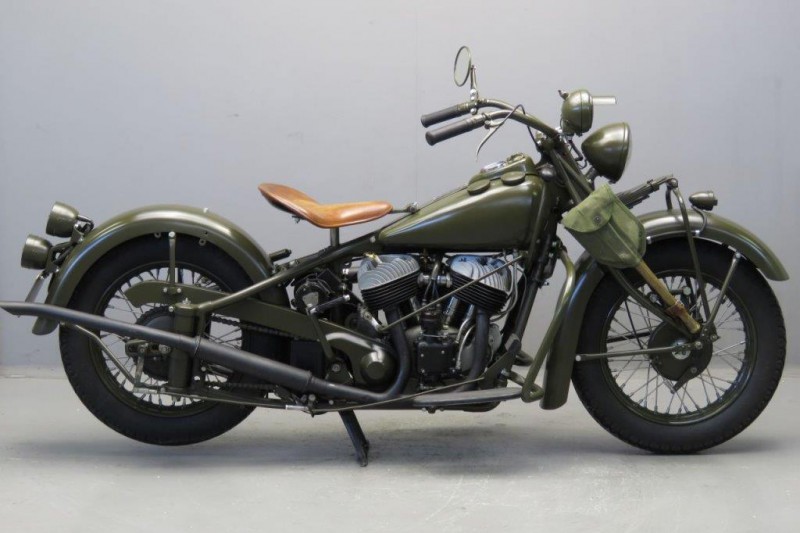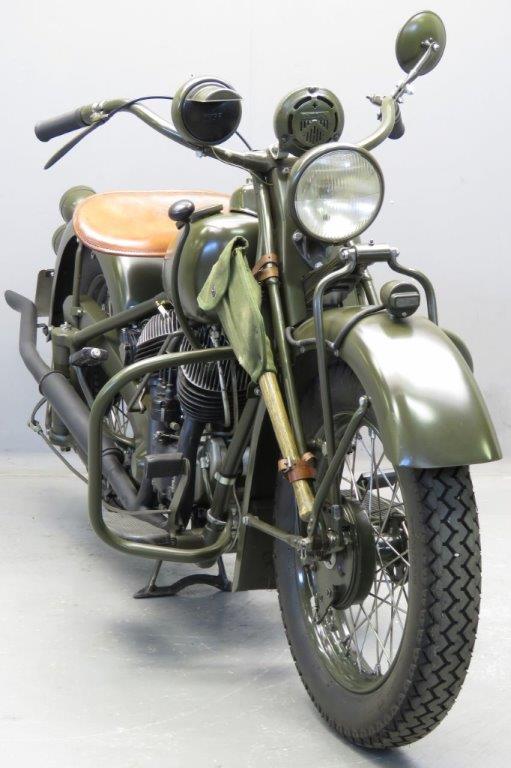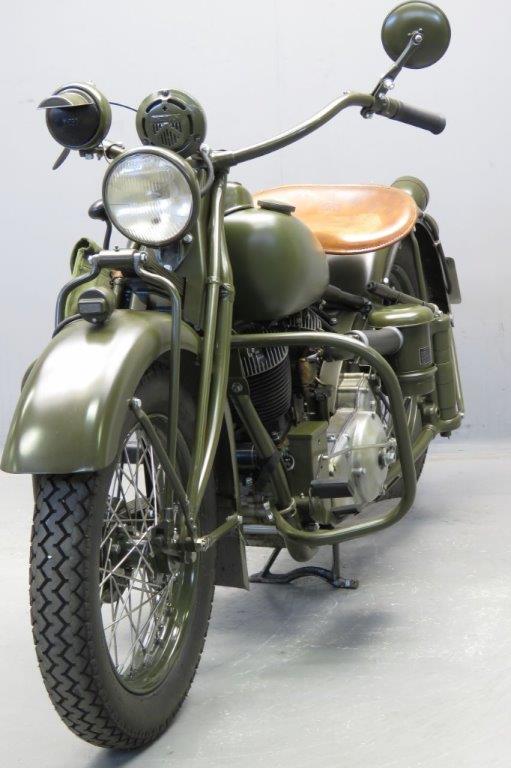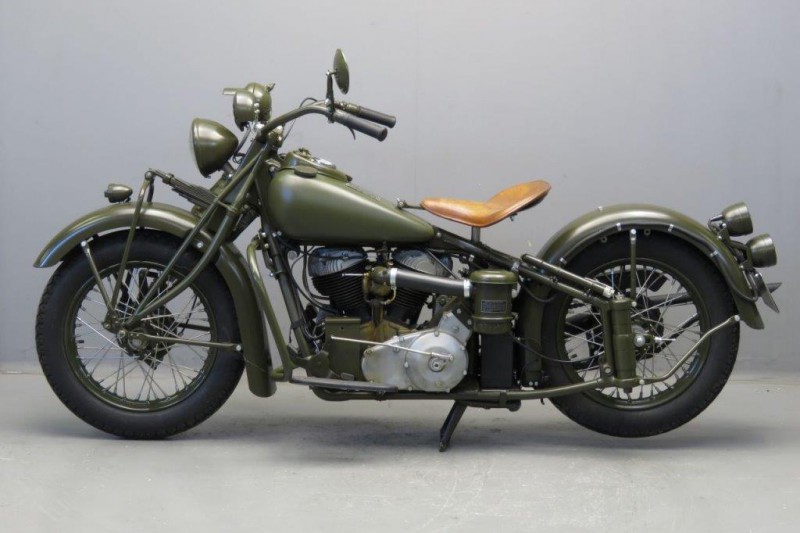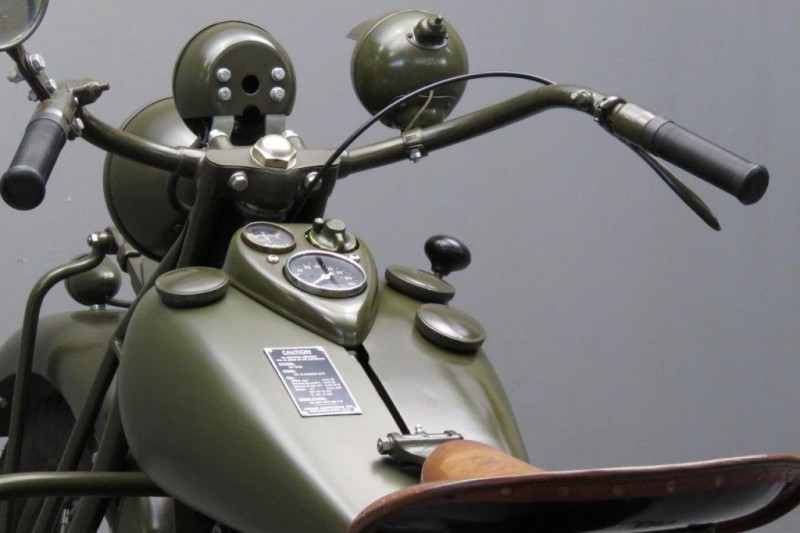Description
Indian 1940 Model 340 Chief 1204 cc side valve v-twin
For model year 1940 the Indian company had thoroughly restyled their range in order to attract more customers.
Streamlining was all the vogue and Indian proudly boasted that they were leaders in this respect. Notable features of the new models were the skirted fenders and the spring frame for the Four and the Big Chief.
But there was much more: new cushioned saddle, lower saddle positions, new tire size, Purolator oil filter unit to make for cooler running of the engine to name just a few novelties.
The 1940 season looked promising and the company had projected an output of some 5,000 machines.
Early October 1939 it became clear that the output was going to be substantially more, because the French army had placed an order of no less than 5,000 Big Chief sidecar combinations. T
he order was for standard machines, without accessories and adapted fenders for military use.
Although the order caused great joy in the financial department, the logistics people found themselves facing an enormous challenge; American dealers and their customers were eagerly awaiting their new 1940 Chiefs.
Most machines reached France before the German invasion in 1940.
The militairy Chief carries a 1200cc, 74cubic-inch flathead V-twin based on the civilian 74” model. The Chief was used mainly by couriers and scouts, and performance and durability are still legendary. A
hand-shifted three-speed transmission and foot-operated clutch were fitted, both being normal practice for the day.
It must have been confusing for a rider to go from an Indian to a Harley, however, because the Indian's clutch was engaged when the lever was pushed down with the heel, while a Harley's engaged by pushing down with the toe.
The configuration is much like that of its smaller brothers the 750 cc 45 cu. inch Military Scout (model 640 B) and the 741 500cc, 30.50 cu.inch, but the 1200 74 cu.inch is much heavier as regards to both frame and engine.
The production ran during the war years.
In that period no significant changes were made in the militairy specification.
A number of the militairy Chiefs were destroyed during the war but quite a few brand new 340’s found their way into the German army.
They were used extensively and a number of them ended up on the Eastern front.
When a “Russian” 340 crossed the path of Belgian motorcycle enthusiast Martin M. Bogaert he got fascinated by the French army Indians and he myths surrounding them.
His “ Quest for the holy CAV” turned into a tough crusade, but it resulted in the very fascinating book “ An American in Paris, the story of the Indian 74 Model 340.” Printed 2008.

